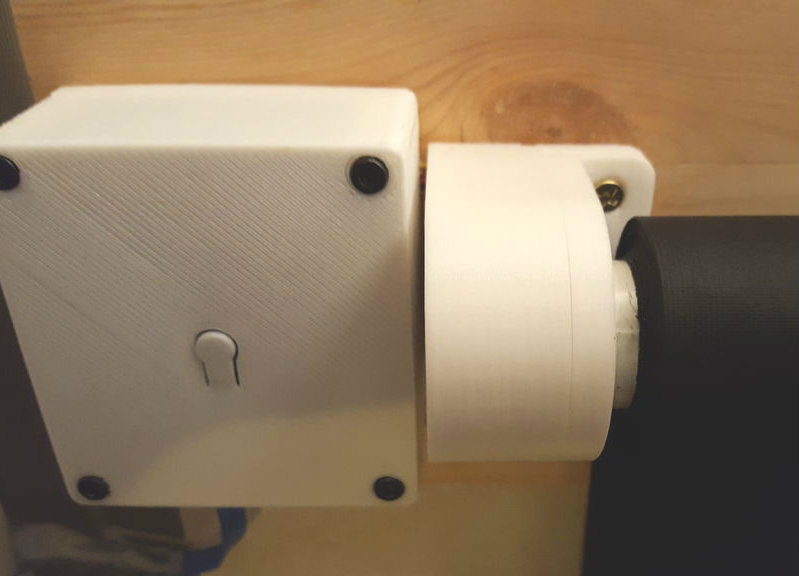No matter what the project is about, we’re always suckers for nicely integrated builds with good fit and finish. There’s a certain appeal to rat’s nest wiring on a breadboard, and such projects are valuable because they push the limits. But eventually you need to go from prototype to product, and that’s where this IKEA window shade automation project shines.
Integration is more than just putting everything in a nice box, especially for home automation gear – it really needs to blend. [ehsmaes] roller blind motorization project accomplishes that nicely with a 3D-printed case for the electronics, as well as a custom case for the geared stepper motor to drive the shade. The drive replaces the standard spring-loaded cap on the end of the IKEA Tupplur shade, and the neutral color of both cases blends nicely with the shade and surroundings. The control electronics include a NodeMCU and a motor shield; [eshmaes] warns that narrow shades work just fine off of USB power, but that wider windows will need a power boost. The IoT end of things is taken care of by MQTT and OpenHab, allowing the shades to be raised and lowered to any position. The short video below shows the calibration procedure for the shade.
Need a primer on MQTT? We’ve got you covered. Or perhaps you need to control the windows rather than the treatments.















Looks like this project has its ups and downs.
Needs a Venga BrainMan to control them https://www.youtube.com/watch?v=hlv672jqbtE
but it didnt leave me blind to the possabilities.
LOL.
Did you see that? _Did you see THAT?!_
So, I’m not the only one who struggles every time with web-interfaces that can’t tell the difference between sliding the whole screen to the left for ‘back in URL-history’ or sliding an item on it.
If anyone got a solution for that, I’d be glad to hear. Currently I am using only vertical sliders to avoid terrible, terrible phone support sessions with our customers.
Use ‘Backspace’ key or the 4th button on the mouse for ‘back in history’.
On a touchscreen? I would love to give our customers a tidy little terminal with lots of buttons. But these days, touch and swipe are all the rage.
There is also one old project with same stepper motor and controller is inside of that cap http://www.thingiverse.com/thing:1584978
Close…. getting close to what I want.
Need dual shades, or a single double length shade.
One reflective, one black. Summer, Winter.
Still no cEEgar.
I’m planning to build a similar one. But it has to be automated by the help of a phototransistor. So when it’s getting dark outside, the shades will go down. And in the morning, when it’s getting light, they will go up again.
actually i want to use an ldr, not phototransistor of course.
Tried this – had problems with cloud cover etc fooling the sensor into thinking it’s night. I found a better approach was to base it off sunrise/sunset times, a much easier prospect these days!
was thinking about this as well, but I think I’m going to try to play around with the sensitivity of the sensor. I think I might get it to work somehow properly.
Best of luck! If you do revert to the sunrise/set approach, I ended up using a WeMo smart plug as a trigger, it had this option – and arduino handled the finer timing control, manual overrides and tracking the state.
What about rather than On/Off run an average of 5, 10, or maybe 15 minutes? Nasty thunderstorms could pose problems. The only fix I can think of there would be knowing about what time it is. If it is between 8am and 6pm it should be more or less light outside.
Did the same here – but with geared 18V motors that I overdrive @24V…
200cm shades in under 3 seconds!
Moral of the story: In the land of the blinds, the one-Ikea’d man is king.
Is there a Nema 17 version of this. I planning to use for a different blind thats 7 feet long